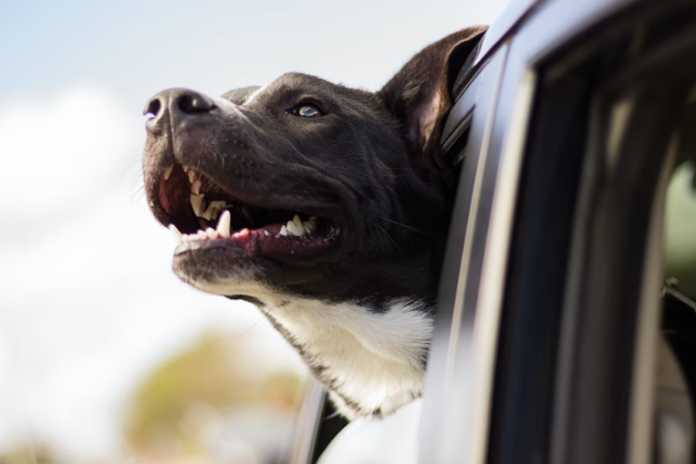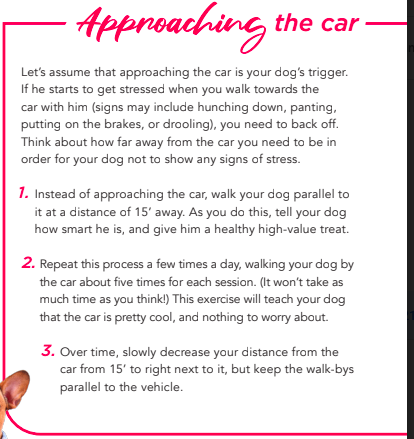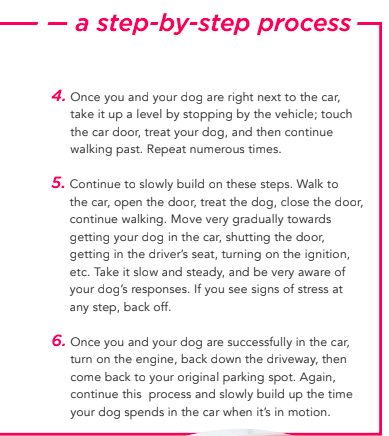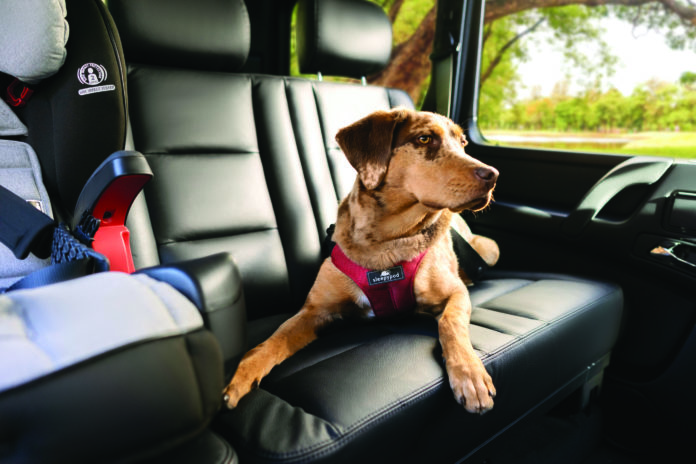Teach your dog to enjoy car rides!

While many dogs love “going for drives”, others may find it stressful. Here’s how to teach your dog to enjoy car rides, whatever his age.
Hitting the road with your dog can be a wonderful adventure. Whether you’re heading to the local park or embarking on a cross-country trip, sharing the journey with a dog that enjoys the ride and is a good traveler makes all the difference. Ideally, it’s best to start getting your dog used to the car while he’s still a puppy, but with time and patience, you can also teach an adult dog that car rides can be relaxing, fun and
stress-free!
For pups or young dogs — starting from scratch
1. Prepare the vehicle for your pup
• Safety is the first consideration. The first step is to research various car harnesses, crates, and seat belt attachments designed for dogs. Ideally, look for a brand that has passed third-party crash testing. Once you have chosen a safe travel harness or crate, make sure you properly secure it in your vehicle per the manufacturer’s instructions.
• Next, consider limiting your dog’s view. Looking out the window while the car is moving can be quite confusing for a dog and can trigger motion sickness, anxiety, and
over-arousal.
Hint: Baby window shades that stick to the side windows of the vehicle are a good solution.
• Set a calming mood. We might like loud, upbeat music in the car, but a stressed dog needs something quieter and more relaxing. Download some calming music onto your
phone and play it when your dog is in the car with you. This will help him “Zen out” and relax.
2. Start acclimatizing him to the car
Don’t wait for that week-long road trip to start teaching your dog to enjoy car rides. In fact, teaching him about the car should become part of his daily routine. You don’t want all his car rides to be solely to the vet’s office; that’s a sure way to teach him that they’re not a very positive experience.
Getting your dog used to the car is also a good way to help socialize him, as it gets him out and about into new environments where he’ll see other people and animals. If you
have a young puppy and are concerned about disease, you can still take him for car rides.
Hint: Going to a park and watching the world go by, even if you both stay in the car, is a great way to socialize him.
3. Prepare your dog
Once your car is canine-friendly, it’s time to prepare your dog. Before getting in the vehicle, take him for a nice walk, play in the yard, or enjoy a fun, positive trick-training
session. Make sure he gets plenty of outside time in order to relieve himself.
 Help your dog into the car. Depending on his size and age, and your vehicle’s design, you may need to gently lift him up and place him inside. It can sometimes be physically
Help your dog into the car. Depending on his size and age, and your vehicle’s design, you may need to gently lift him up and place him inside. It can sometimes be physically
and mentally difficult for dogs to jump up into cars on their own. If you have a large breed, consider a pet ramp.
4. Keep rides short and sweet at first
Keeping car rides short in the beginning can help your dog learn not to stress. It can also help keep motion sickness at bay (see sidebar on right). Start by taking your dog
around the block, then gradually increase the length of your trips by driving him to the next subdivision or town, then further afield. This is a great way to slowly introduce him to traveling by car (and it also builds on his socialization skills!).
5. On longer trips, take frequent breaks
Once your dog is used to riding in the car, and is relaxed and happy about it, you can consider longer trips. Just be sure to plan frequent breaks if you’re going to be in the car for more than a few hours. It’s a good time for both of you to stretch your legs, and for your dog to take a potty break (be sure to clean up after him).
Hint: Find fun spots to stop along your route, so you can take 15 minutes and explore the area with your dog. Remember, you want car trips to be positive and enjoyable
for your dog.
 For adult dogs — troubleshooting tips
For adult dogs — troubleshooting tips
If you’re working with an adult dog that is already stressed or nauseated (or both) by car rides, it will take extra time and patience to reteach his mind and body to relax and enjoy.
Hint: In a nutshell, you will be teaching your dog that the car is a good thing.
To start, make a detailed list of what elicits your dog’s anxiety or fear when it comes to car rides. Is it picking up his leash, opening the garage door, or approaching the car? Once you know, use a positive approach to desensitize your dog.
Whatever the age of your dog, the more often you practice, the sooner he will come to enjoy car rides. The process will take longer with some dogs than others, but be
patient and stick with it. Remember that your efforts will pay off, and that fun trips lie ahead!
WE MIGHT LIKE LOUD, UPBEAT MUSIC IN THE CAR, BUT A STRESSED DOG NEEDS SOMETHING QUIETER AND MORE RELAXING.



